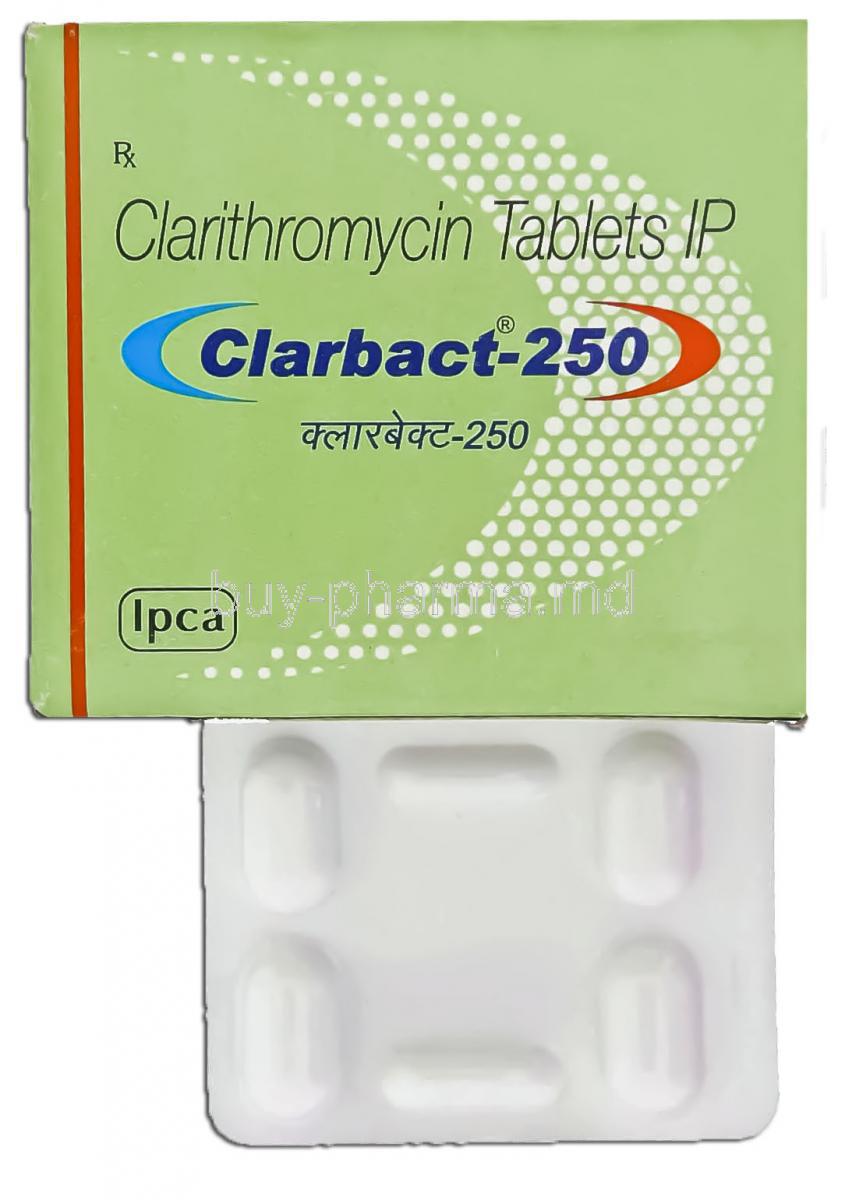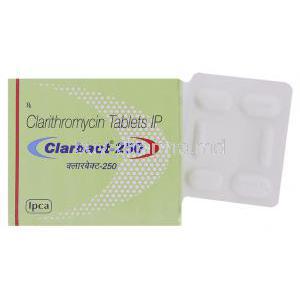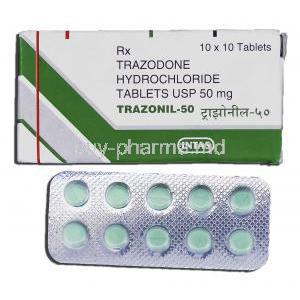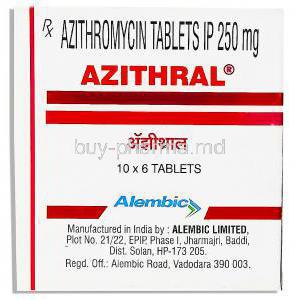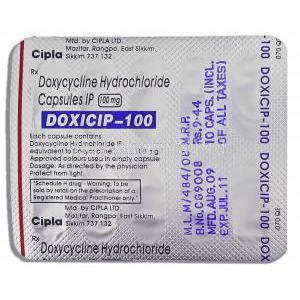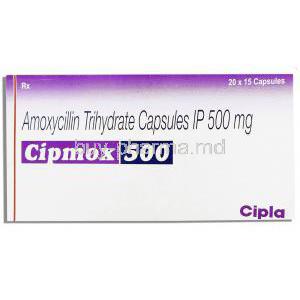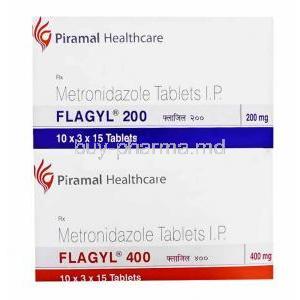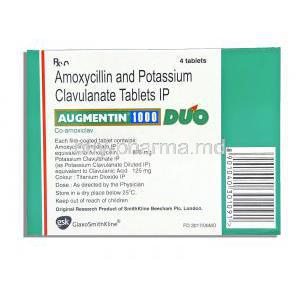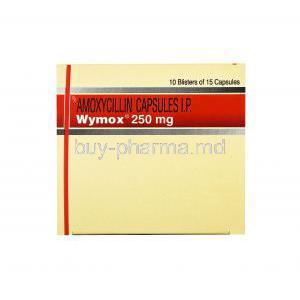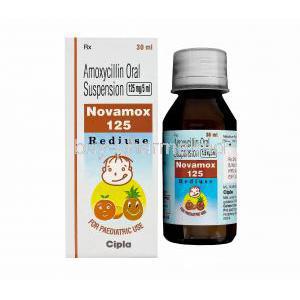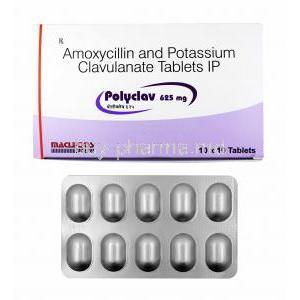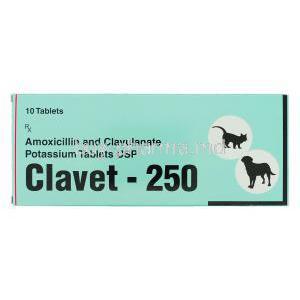Introduction
Overview of Clarbact (Clarithromycin Tablet)
Clarbact, containing clarithromycin as its active ingredient, is a well-recognized antimicrobial medicine prescribed to combat a broad spectrum of bacterial infections. It has become a cornerstone in the management of both community-acquired and hospital-related infections, due to its potent activity against numerous pathogens.
Classification as a Macrolide Antibiotic
Clarbact belongs to the macrolide class of antibiotics, a group characterized by their large lactone ring structure and targeted interference with bacterial protein synthesis. This category is often used when penicillin-based therapies are unsuitable due to allergies or resistance.
Historical Development and Approval Background
Clarithromycin was developed in the late 20th century as a semi-synthetic derivative of erythromycin, aiming to enhance stability and tolerability. It received regulatory approval in the 1990s and has since remained a widely prescribed antibiotic worldwide.
Role in Modern Antimicrobial Therapy
In contemporary medicine, Clarbact is integral in addressing infections resistant to older drugs. Its broad spectrum and versatility make it a reliable option for respiratory, gastrointestinal, and dermatological infections. Physicians also utilize it as part of combination regimens for complex infections.
Composition and Formulation
Active Ingredient: Clarithromycin
The therapeutic efficacy of Clarbact is attributed to clarithromycin, a macrolide antibiotic with high bioavailability and strong tissue penetration.
Available Strengths and Dosage Forms
- 250 mg and 500 mg tablets
- Oral suspension for pediatric or swallowing-impaired patients
Inactive Ingredients and Excipients
Each tablet includes stabilizers, binders, and protective coatings to ensure proper absorption, improved stability, and patient compliance. Common excipients may include lactose, magnesium stearate, and hydroxypropyl methylcellulose.
How Clarbact (Clarithromycin) Works
Mechanism of Action as a Macrolide Antibiotic
Clarithromycin targets bacterial ribosomes, binding to the 50S subunit and halting peptide chain elongation. This disruption impedes protein synthesis, effectively curbing bacterial growth and replication.
Inhibition of Bacterial Protein Synthesis
By interfering with ribosomal translocation, Clarbact prevents the assembly of vital bacterial enzymes and structural proteins, leading to bacteriostatic or bactericidal effects depending on the organism and dosage.
Spectrum of Antimicrobial Activity
- Gram-positive organisms such as Streptococcus pneumoniae
- Gram-negative organisms including Haemophilus influenzae
- Atypical pathogens like Mycoplasma pneumoniae and Chlamydophila pneumoniae
Resistance Patterns and Limitations
Overuse may lead to resistant strains, particularly in Streptococcus and Staphylococcus species. Local resistance data should guide prescribing practices.
Medical Uses of Clarbact
Approved Clinical Uses
- Respiratory tract infections: pneumonia, bronchitis, sinusitis, pharyngitis, tonsillitis
- Skin and soft tissue infections: cellulitis, erysipelas, impetigo
- Otitis media: particularly in pediatric patients
- Helicobacter pylori eradication: as part of combination therapy for peptic ulcer disease
- Mycobacterial infections: prevention and treatment of Mycobacterium avium complex in immunocompromised individuals
Off-Label Uses
- Adjunctive therapy in Lyme disease
- Treatment of Legionnaires’ disease
- Toxoplasmosis management in immunocompromised patients
- Prophylaxis for endocarditis in those allergic to penicillin
- Adjunctive use in dermatological infections
Dosage and Administration
Standard Adult Dosage Guidelines
Typical dosing ranges from 250 mg to 500 mg twice daily, depending on infection severity. Duration is often 7–14 days.
Pediatric Dosing and Weight-Based Calculations
Dosing in children is generally calculated as 7.5 mg/kg every 12 hours, with adjustments based on weight and clinical response.
Administration with or Without Food
Clarbact may be taken with or without meals. However, administration with food may reduce gastrointestinal discomfort.
Dosage Adjustments in Renal and Hepatic Impairment
Patients with reduced renal function (creatinine clearance <30 mL/min) may require a 50% dosage reduction. Caution is advised in hepatic impairment.
Duration of Therapy by Indication
- Respiratory infections: 7–10 days
- Helicobacter pylori eradication: 10–14 days in combination regimens
- Mycobacterial infections: prolonged therapy as guided by specialists
Side Effects of Clarbact
Common Side Effects
- Gastrointestinal disturbances: nausea, vomiting, abdominal cramps, diarrhea
- Altered taste perception, often metallic or bitter
- Neurological complaints: headache, dizziness
Serious Side Effects
- QT interval prolongation leading to dangerous arrhythmias
- Severe allergic reactions including anaphylaxis and angioedema
- Liver-related complications such as hepatotoxicity and cholestatic jaundice
- Clostridioides difficile-associated diarrhea
Drug Interactions
Interaction with Warfarin and Anticoagulants
Concomitant use may elevate INR levels, heightening bleeding risk. Close monitoring of coagulation parameters is mandatory.
CYP3A4 Inhibitors and Inducers
Clarbact is metabolized by the CYP3A4 enzyme. Co-administration with inhibitors (azole antifungals, erythromycin) or inducers (rifampin) can alter therapeutic levels significantly.
Statins and Risk of Rhabdomyolysis
Combined use with certain statins may increase risk of muscle toxicity, including rhabdomyolysis. Simvastatin and lovastatin are particularly contraindicated.
Theophylline and Carbamazepine Interactions
Serum concentrations of these drugs may rise when taken with clarithromycin, necessitating dosage adjustments.
Effect on Digoxin and Antiarrhythmic Agents
Clarbact may enhance digoxin levels and interact with drugs affecting cardiac conduction, requiring vigilance in susceptible patients.
Contraindications
Known Hypersensitivity to Macrolide Antibiotics
Clarithromycin is strictly contraindicated in individuals with a history of allergic reactions to macrolide antibiotics. Manifestations may include rash, itching, urticaria, or life-threatening anaphylaxis. Re-exposure in such cases can trigger severe hypersensitivity reactions.
History of Cholestatic Jaundice or Hepatic Dysfunction Due to Clarithromycin
Patients who have previously developed cholestatic jaundice or hepatic impairment linked to clarithromycin should avoid its use. Recurrence may result in progressive liver damage, jaundice, or hepatic failure.
Concurrent Use with QT-Prolonging Medications
- Cisapride
- Pimozide
- Terfenadine
- Astemizole
Simultaneous use may significantly increase the risk of cardiac arrhythmias, including torsades de pointes. Alternative therapies are recommended in such scenarios.
Warnings and Important Precautions
Risk of Antibiotic Resistance with Inappropriate Use
Unnecessary or incomplete courses of clarithromycin can promote resistant bacterial strains. Such resistance diminishes treatment efficacy and complicates future infection control.
Monitoring of Liver and Kidney Function
Prolonged therapy necessitates periodic evaluation of hepatic enzymes and renal function. Early detection of abnormalities allows timely dose modification or drug discontinuation.
Precaution in Patients with Cardiovascular Disease
Individuals with pre-existing heart disease require careful monitoring, as clarithromycin may prolong the QT interval and precipitate arrhythmias.
Risk of Superinfection with Long-Term Use
Extended therapy may disrupt the natural microbiota balance, leading to fungal overgrowth or opportunistic bacterial infections. Vigilance for secondary infections is critical.
Careful Administration in Special Populations
Elderly Patients
- Age-related pharmacokinetic changes may necessitate dose adjustment.
- Heightened susceptibility to drug interactions due to polypharmacy.
- Increased risk of cardiac conduction disturbances warrants electrocardiographic monitoring.
Pregnant Women and Nursing Mothers
- Safety Data: Clarithromycin has limited human pregnancy data; caution is advised.
- Placental Transfer: The drug crosses the placenta and may expose the fetus to potential risks.
- Breastfeeding: Excreted in small amounts in breast milk. Infants should be observed for gastrointestinal disturbances or allergic responses.
Pediatric Use
- Approved for use in children when dosed appropriately based on body weight.
- Dosage must align with age-specific recommendations to minimize toxicity.
- Common side effects in children include diarrhea, abdominal pain, and taste alterations, requiring monitoring.
Overdosage and Emergency Management
Symptoms of Overdose
Excessive intake may provoke severe nausea, vomiting, abdominal discomfort, dizziness, confusion, or cardiac rhythm abnormalities.
Supportive Care and Symptomatic Treatment
There is no specific antidote. Management involves supportive measures, ensuring airway protection, and maintaining hydration.
Gastric Lavage and Activated Charcoal
Early administration of gastric lavage or activated charcoal may help reduce absorption, particularly in recent overdoses.
Monitoring of Vital Signs and Electrolyte Balance
Continuous observation of cardiac function, blood pressure, and electrolyte levels is vital until stabilization is achieved.
Storage and Handling Precautions
Recommended Storage Temperature and Conditions
Clarbact tablets should be stored at controlled room temperature, typically between 15°C and 25°C, protected from excessive heat and moisture.
Shelf Life and Stability
The product maintains potency within its labeled shelf life if stored properly. Expired tablets should not be used due to potential loss of efficacy.
Safe Handling and Disposal Instructions
Unneeded or expired medication should be disposed of through pharmacy take-back programs or according to local regulations. Tablets should not be flushed into water systems.
Keeping Medication Out of Reach of Children
Tablets must be stored securely, away from children and pets, to prevent accidental ingestion and potential poisoning.
Clarbact, Clarithromycin Tablet FAQ
- What is clarithromycin tablet used for?
- When is the best time to take clarithromycin tablets?
- What are the main side effects of clarithromycin?
- What to avoid while taking clarithromycin?
- Is clarithromycin a strong antibiotic?
- How long should you take clarithromycin?
- Can clarithromycin make you sleepy?
- How quickly does clarithromycin take to work?
- Who cannot take clarithromycin?
- Can clarithromycin damage kidneys?
- Can I buy clarithromycin over the counter?
- Can clarithromycin affect your mood?
- Can you take vitamin D with clarithromycin?
- What bacteria are sensitive to clarithromycin?
- Is 500mg of clarithromycin twice a day strong?
- Which is the most common side effect of clarithromycin?
- Which is better, amoxicillin or clarithromycin?
- Does clarithromycin cause insomnia?
- How many days does clarithromycin stay in the body?
- Can clarithromycin cause blood clots?
- Can I take paracetamol with clarithromycin?
- What is the success rate of clarithromycin?
- Is clarithromycin used for tooth infection?
- What are the most common side effects of clarithromycin?
- What bacteria are resistant to clarithromycin?
- Is clarithromycin safe?
- What is a good substitute for clarithromycin?
- When will I feel better after taking clarithromycin?
- Can clarithromycin cause a yeast infection?
- What infections does clarithromycin treat?
- Can I take clarithromycin with omeprazole?
- Does clarithromycin give you anxiety?
What is clarithromycin tablet used for?
Clarithromycin is a type of antibiotic that doctors use to treat a range of infections like pneumonia, skin problems, and ear infections.
When is the best time to take clarithromycin tablets?
Morning
What are the main side effects of clarithromycin?
Feeling sick (nausea), vomiting, diarrhea, bloating, headaches
What to avoid while taking clarithromycin?
- Ergotamine or dihydroergotamine
- Medicines for epilepsy
- Theophylline for asthma
- Colchicine for gout
- Digoxin
- Warfarin
Is clarithromycin a strong antibiotic?
Yes
How long should you take clarithromycin?
7-14 days
Can clarithromycin make you sleepy?
Yes
How quickly does clarithromycin take to work?
7 days
Who cannot take clarithromycin?
- Have allergic reaction to calirthromycin
- Have ongoing diarrhea
- Irregular heartbeat
- Low potassium levels or magnesium
Can clarithromycin damage kidneys?
Yes
Can I buy clarithromycin over the counter?
No
Can clarithromycin affect your mood?
Rarely
Can you take vitamin D with clarithromycin?
Yes
What bacteria are sensitive to clarithromycin?
Gram-positive (Staphylococcus aureus, S. pneumoniae, and S. pyogenes) and Gram-negative aerobic bacteria (Haemophilus influenzae, H.)
Is 500mg of clarithromycin twice a day strong?
Yes
Which is the most common side effect of clarithromycin?
- Stomach pain
- Diarrhea
- Nausea
- Vomiting
- Allergic reactions
- Skin reactions
Which is better, amoxicillin or clarithromycin?
Amoxicillin
Does clarithromycin cause insomnia?
Yes
How many days does clarithromycin stay in the body?
16 to 22 hours
Can clarithromycin cause blood clots?
Yes
Can I take paracetamol with clarithromycin?
Yes
What is the success rate of clarithromycin?
97.5%
Is clarithromycin used for tooth infection?
No
What are the most common side effects of clarithromycin?
Stomach pain, nausea, vomiting, diarrhea, or an unusual or unpleasant taste in your mouth.
What bacteria are resistant to clarithromycin?
New generation of resistant H. pylori isolates
Is clarithromycin safe?
Clarithromycin may increase the risk for heart and blood vessel problems in patients with these conditions
What is a good substitute for clarithromycin?
- Rituxan
- Gazyva
- Obinutuzumab
- Revlimid
- Truxima
- Kymriah
When will I feel better after taking clarithromycin?
Within a few days
Can clarithromycin cause a yeast infection?
Prolonged usage of clarithromycin can cause a yeast infection or oral thrush
What infections does clarithromycin treat?
This medication is often prescribed for a range of infections, including those that affect the respiratory system, like pneumonia. It's also commonly used to combat skin issues, such as cellulitis.
Can I take clarithromycin with omeprazole?
No
Does clarithromycin give you anxiety?
Yes

